The crooked heart of Calgary: A quirk of history
Why the citys downtown avenues are all on an angle
This story was originally published on Sept. 3, 2016.
You've probably never noticed, but Calgary is crooked.
Geographically crooked, that is.
Ever wondered why16th AvenueSWmysteriously vanishes east of Seventh Street?
Seriously, it does. Pull out a map and check.
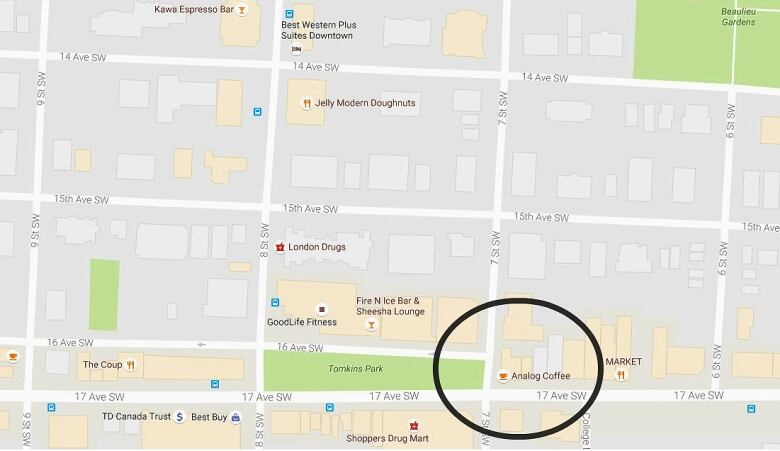
A core problem
You've probably heard someone say how easy it is to navigate Calgary because it's like a grid all the streets run north-south and all the avenues run east-west. We're even proud of our straight clean lines.
But take a look at the downtown core.
All the avenues between 17thAvenuein the south and the Bow River in the northare slightly slanted to the southeast.
Oops.

Outside that area, the avenues run true east-west.
The problem gets fixed with a course correction at 17thAvenue, which explains the disappearance of 16thAvenueSW.
So the question iswhat the heck happened?
- MORE CALGARY NEWS |Julie Van Rosendaal makes KFC's leaked fried chicken recipe
- MORE ALBERTANEWS |Hungover customer inundated with good karma after helping struggling fish and chip shop
Why arewe so wonky?
Turns out Calgary's crooked existence beganmore than 120years ago, when it was more or less a small jumble of shacks and shops.
The first Canadian Pacific Railway train rolled intoCalgary in early August of1883. It came from Winnipeg in the east, and the next step was to build the line west towards Banff.
And so, they laid down a new track.And that wasthe key.
"The line for the railway was not properly laid out on a true west footing," says Robert Henderson, president of the St. Andrew-Caledonian Society of Calgary.
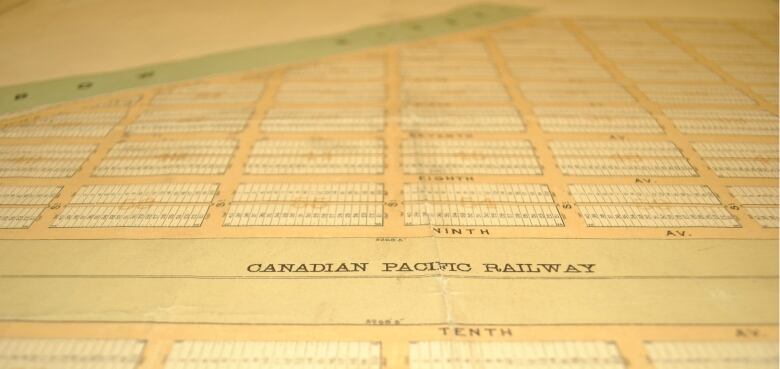

Crooked tracks =crooked avenues
It wasn't until a year after the tracks were laid down that Calgaryofficially became a town. Only thendid the downtownbegin to take shape.
Now, while our downtown avenues may not run true east-west, they are perfectly parallel to the rail line that runs through the heart of Calgary.
"The railway was used as the centre line or the basis for all the plans in downtown Calgary," said Henderson.
So whywere the rails on an angle? Who had to go to their boss and say, "You know that line we just built? Well..."
Hendersonhas two theories.
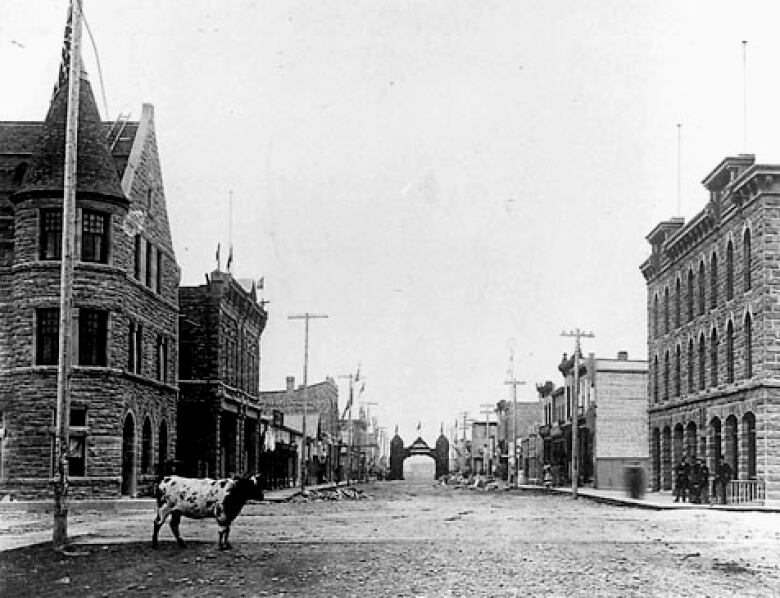
Theory # 1: Not a penny wasted
Before we go on, you're probably wondering why some guy involved with a Scottish cultural organization would be tracking Calgary history.
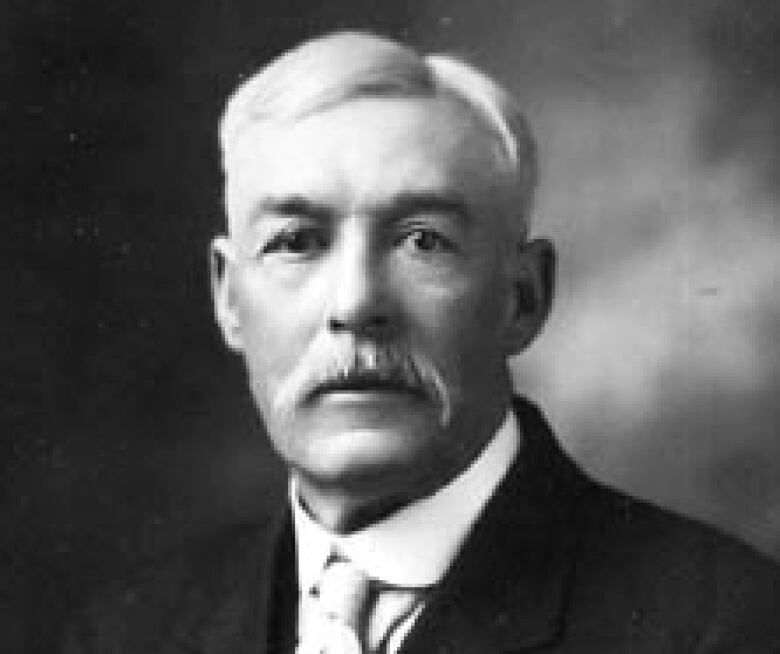
Turns out that the St. Andrew-Caledonian Society of Calgary was founded in 1884 the same year that Calgary became a town. Thesociety was deeply involved in the development of Calgary.
And while he's not a professional historian, Henderson has a degree in the subject, and used to live down the street from the late Robert McKay, the grandson of Alfred Sidney McKay.
Alfred McKay was the surveyor who mapped the CPR tracks through Calgary.
McKay's grandson toldHenderson that gramps wastold to draw the straightest line between the Elbow River crossing inInglewoodand the foot of the bluffs that run west along the Bow River.
By doing this, workers were able to lay down less track.Less track meant less iron and steel and that kept the CPR's top brass happy.
"Very tight-fisted Scots. Not a penny is supposed to be wasted. And so they're looking for the least expensive line that they can do, the truest, straightest line," said Henderson.
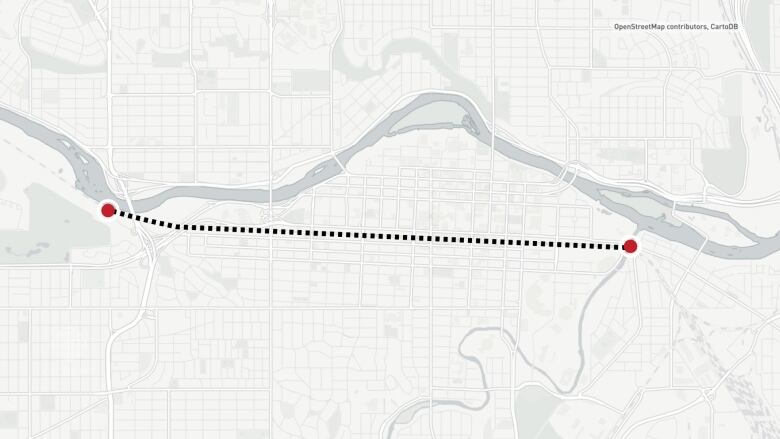
Theory #2: The compass was off
Henderson's second theory is that McKay's "compass was slightly off."
How's that possible? Science explains it.
A needle on a compass always points towards magnetic north, which is close to true north, but not exactly.
When you're standing in Calgary, magnetic north points towards Hudson Bay.
"You account for that by adjusting your compass for what's called declination,"Henderson said.
He thinks it's possible that McKay forgot to adjust. So, as the rail line went west, all the readings would have been slightly off,which would result in McKay plotting the line on a southeast angle.
"The margin of error in 1883 was pretty wide," saidHenderson.

A living legacy
As Calgary grew, and the areas now known as the core and Connaught came into being, the weird angle of avenues continued right up until it hit what is now 17th Avenue.
Back then, 17th was a dirt road in the countryside, not part of the town, and laid down separately by a different survey. And it ran straight and true east-west.
And when new met old, something had to give. That's why 16th Avenuepeters out at Seventh Street aphysical reminder of how our city began.
Calgary at a Crossroads is CBC Calgary's special focus on life in our city during the downturn. A look at Calgary's culture, identity and what it means to be Calgarian. Read more stories from the series at Calgary at a Crossroads.














_(720p).jpg)


 OFFICIAL HD MUSIC VIDEO.jpg)
.jpg)



























































































